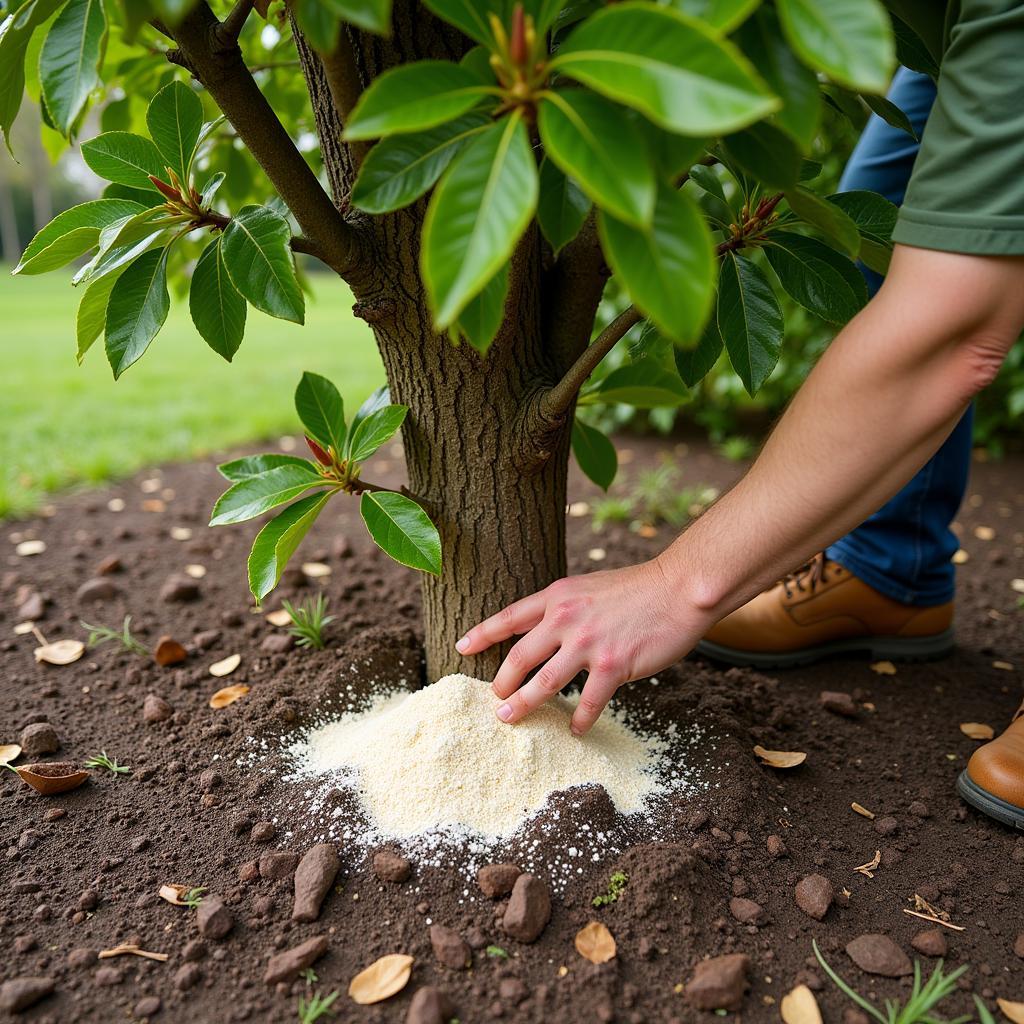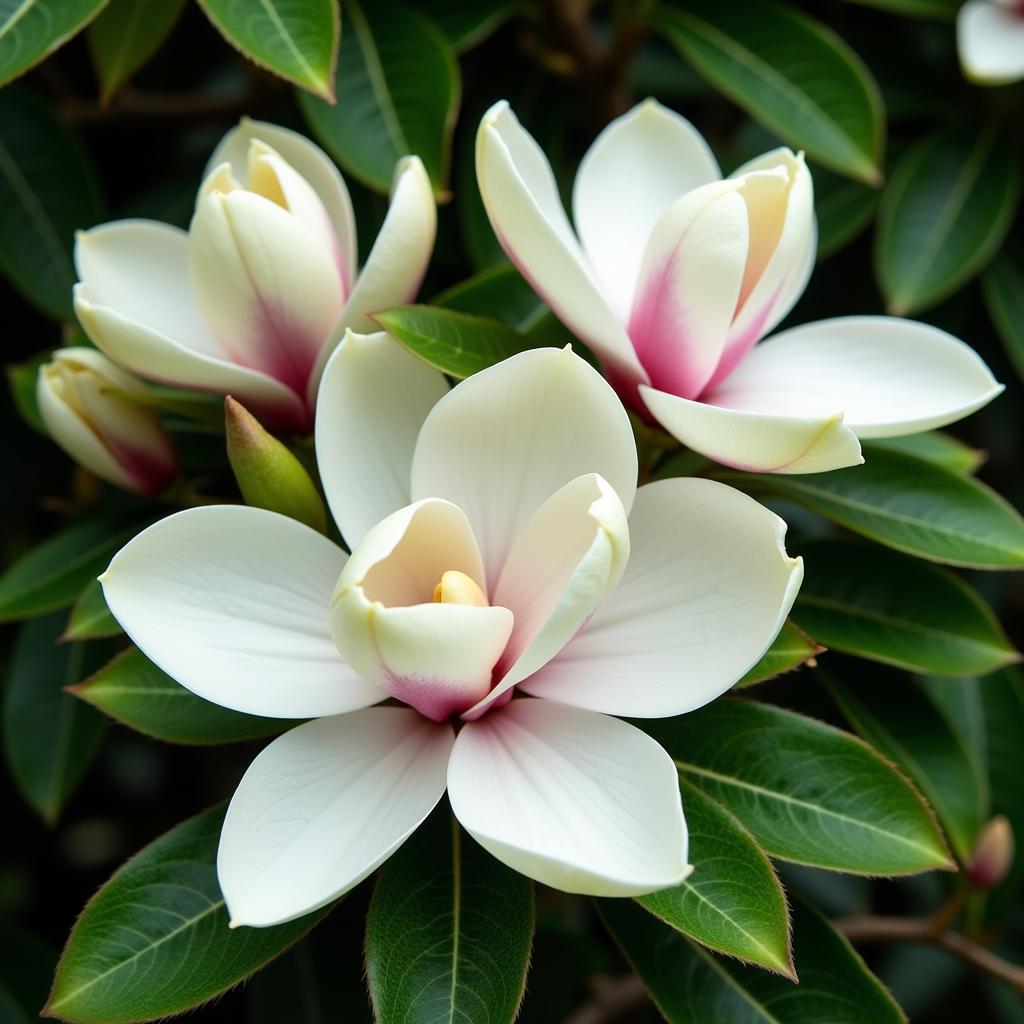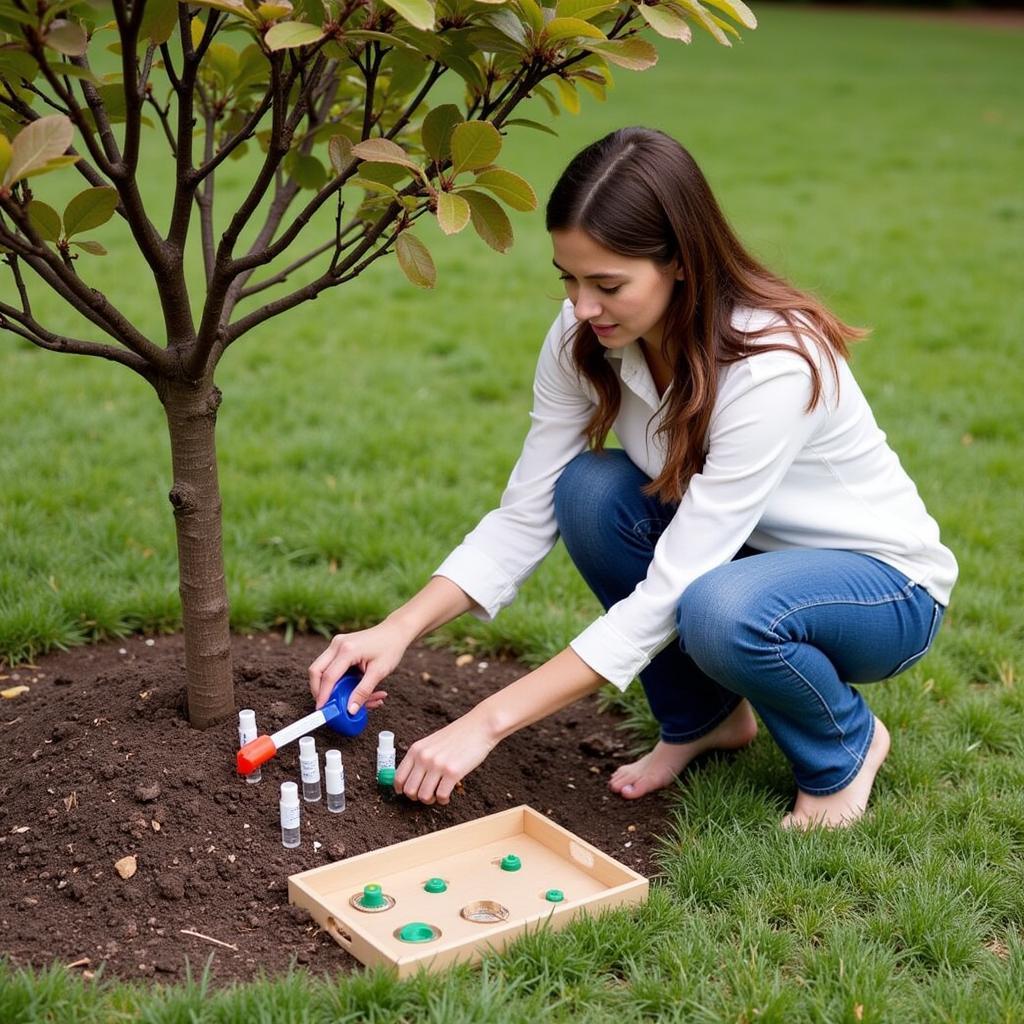Magnolia trees, with their elegant blooms and captivating fragrance, are a true Southern belle of the garden. But to keep these majestic beauties thriving, you need to understand the best Plant Food For Magnolia Trees. Choosing the right nutrients is crucial for vibrant foliage, abundant blooms, and overall tree health. Let’s explore the essentials of magnolia nutrition and how to provide the optimal care for these stunning specimens.
Understanding Magnolia’s Nutritional Needs
Just like any other plant, magnolias need a balanced diet of essential nutrients. These include nitrogen (N), phosphorus (P), and potassium (K), often represented as the NPK ratio on fertilizer packaging. Nitrogen promotes lush, green foliage growth; phosphorus supports strong root development and blooming; while potassium contributes to overall plant health and disease resistance.
Understanding your soil type is the first step in determining the right plant food. A simple soil test can reveal any nutrient deficiencies and guide your fertilizer choices. Magnolias generally prefer slightly acidic soil (pH 5.5-6.5). If your soil is too alkaline, you might need to amend it with sulfur or other acidifying agents.
Choosing the Right NPK Ratio
For established magnolias, a balanced fertilizer with an NPK ratio close to 1:1:1 or 2:1:1 is generally recommended. Younger trees might benefit from a slightly higher nitrogen content to encourage rapid growth. Look for slow-release granular fertilizers, which provide a steady supply of nutrients over time, preventing over-fertilization and minimizing environmental impact.
Over-fertilizing can lead to root burn and other issues, so always follow the manufacturer’s instructions carefully. It’s better to err on the side of caution and apply less fertilizer than too much.
 Fertilizing a Magnolia Tree for Optimal Growth
Fertilizing a Magnolia Tree for Optimal Growth
Organic Options for Magnolia Trees
Organic fertilizers, such as compost and well-rotted manure, are excellent choices for magnolia trees. These options improve soil structure, enhance nutrient availability, and promote beneficial microbial activity. Compost can be applied as a top dressing around the tree’s base in spring or fall.
Worm castings, another fantastic organic option, are rich in nutrients and beneficial microbes. They also improve soil drainage and aeration, contributing to a healthy root environment for your magnolia.
Timing is Everything: When to Fertilize
The best time to fertilize magnolias is in early spring, just before new growth begins. This provides the tree with the necessary nutrients to support the development of leaves and flowers. Avoid fertilizing late in the season, as this can encourage new growth that may be susceptible to frost damage.
For young trees, a light feeding in mid-summer can be beneficial to encourage further growth, but be cautious not to over-fertilize.
 Vibrant Magnolia Blooms in Full Bloom
Vibrant Magnolia Blooms in Full Bloom
Watering and Mulching
Proper watering and mulching are essential for magnolia tree care, especially when using fertilizers. Water deeply and regularly, particularly during dry periods, to help the fertilizer dissolve and reach the roots.
Apply a layer of organic mulch, such as shredded bark or pine straw, around the base of the tree. This helps retain moisture, suppress weeds, and regulate soil temperature. Avoid piling mulch against the trunk, as this can create a moist environment that encourages diseases and pests.
Signs of Nutrient Deficiency
Yellowing leaves, stunted growth, and poor flowering can be signs of nutrient deficiency. Iron deficiency is common in magnolias, especially in alkaline soils. This can cause interveinal chlorosis, where the leaves turn yellow but the veins remain green. A soil test can help identify the specific deficiency and guide appropriate treatment.
Consulting a Professional
If you’re unsure about the best plant food for your magnolia tree, consulting with a certified arborist or local gardening expert can provide valuable insights. They can assess your tree’s specific needs and recommend the appropriate fertilizers and care practices.
“Healthy soil is the foundation for healthy magnolias,” says Dr. Emily Carter, a renowned horticulturalist with over 20 years of experience. “A balanced approach to fertilization, combined with proper watering and mulching, is key to achieving magnificent blooms and a thriving tree.”
 Conducting a Soil Test for Magnolia Tree
Conducting a Soil Test for Magnolia Tree
Conclusion
Choosing the right plant food for magnolia trees is essential for their health and vitality. By understanding their nutritional needs, selecting the appropriate fertilizer, and following proper application techniques, you can ensure that your magnolia thrives and rewards you with its breathtaking beauty for years to come. Remember, a little care goes a long way in nurturing these magnificent trees and enjoying their stunning blooms season after season.
FAQs
- How often should I fertilize my magnolia tree? Generally, once a year in early spring is sufficient for established trees.
- What is the best type of fertilizer for magnolias? A balanced, slow-release granular fertilizer with an NPK ratio close to 1:1:1 or 2:1:1 is recommended.
- Can I use organic fertilizer for my magnolia? Absolutely! Compost, well-rotted manure, and worm castings are excellent organic options.
- What are the signs of over-fertilizing a magnolia tree? Root burn, leaf scorch, and stunted growth can indicate over-fertilization.
- Why are my magnolia leaves turning yellow? Yellowing leaves can be a sign of nutrient deficiency, particularly iron deficiency.
- When is the best time to plant a magnolia tree? Spring or fall are ideal planting times for magnolias.
- How can I improve the soil drainage for my magnolia? Amending the soil with organic matter, such as compost, can improve drainage and aeration.
For any assistance regarding plant food for your magnolia trees, please contact us at Phone Number: 02437655121, Email: [email protected] Or visit us at: 3PGH+8R9, ĐT70A, thôn Trung, Bắc Từ Liêm, Hà Nội, Việt Nam. We have a 24/7 customer service team.